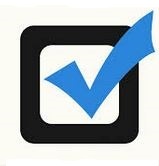Schedule H Household Employment
Tax Preparation Checklist

For comprehensive information about the household Employment topic, refer to Internal Revenue Service Publication 926, Household Employer’s Tax Guide, and related publications along with resources provided by state agencies.
File Schedule H (Form 1040), Household Employment Taxes, with your Federal income tax return (Form 1040, 1040NR, 1040-SS, or Form 1041). If you do not have to file a return, file the Schedule H by itself.
Who Must File Schedule H?
IRS RULES: Do you employ household help? A nanny or babysitter? domestic worker, or caretaker? Health aide or private nurse, cleaning person? Generally, if you control what work is done and how it is accomplished, the worker is your employee.
Employers Have Required Tax Responsibilities
- You are required to file paperwork with government agencies and retain documentation for review upon notice.
- You may have to pay Social Security, Medicare, and federal unemployment insurance. You may need to withhold employee state and federal income tax.
- Depending on state regulations, you may have to withhold state income tax and pay disability and workers’ compensation insurance.
Employee or Independent Contractor?
Services performed that are subject to your will and control — as to both what must be done and how it must be done — is considered an employee. Independent contractors, on the other hand, determine for themselves how the work is to be done.
Employers identification number registration. Employers must:
- Obtain an employer identification number (EIN). Federal Form SS-4, Application for Employer Identification Number.
- Check with your state for the specific state application form.
- Verify your employees’ citizenship. To hire or continue to employ an alien who cannot legally work in the United States is against the law.
- You must fill out and retain U.S. Citizenship and Immigration Services (USCIS) Form I-9, Employment Eligibility Verification Form (visit www.uscis.gov).
Household Employment Taxes and Tax Records
An employer, must keep employment tax records for at least 4 years after the due date of the return on which you report the taxes or the date the taxes were paid, whichever is later. You also must:
- Keep a record of your employee’s name and social security number exactly as they appear on his or her social security card
- Keep copies of Schedule H or other employment tax forms and related Forms W-2, W-3, and W-4.
- Keep records to support the information entered on the forms filed. If you must file Form W-2, you will need to keep a record of your employee’s name, address, and social security number.
- Keep wage and tax records. Each payday, record the date and amounts of the following:
- Employee cash and non-cash wages
- Any federal income tax you withhold
- Employee social security tax withheld or paid for employee
- Medicare tax withheld or paid for your employee.
- Any state employment taxes you withhold.
Household Employer’s Tax Preparation Checklist
![]() Get an employer
identification number (EIN), using Form SS-4.
Get an employer
identification number (EIN), using Form SS-4.
![]() Determine
if you need to pay state taxes. Complete, file, and retain a state application for an identification
number, and unemployment, and state employer withholding allowance certificate.
Determine
if you need to pay state taxes. Complete, file, and retain a state application for an identification
number, and unemployment, and state employer withholding allowance certificate.
When you pay your household employee:
- Keep payroll and other records.
- Decide how you will make tax payments.
- Withhold and pay social security and Medicare taxes.
- Pay and report FUTA taxes, if applicable.
- Withhold and pay federal income tax if requested (Form W-4, Employee Withholding Allowance Certificate from employee).
- Withhold, pay, and report any applicable state responsibilities (state income tax, unemployment, workers compensation insurance, etc).
- Prepare and provide your employee Copies B, C, and 2 of Form W-2, Wage and Tax Statement, if applicable.
- Send Copy A of Form W-2, with transmittal Form W-3, to the Social Security Administration, if applicable.
- File Schedule H (Form 1040), Household Employment Taxes, with your federal income
tax return (Form 1040).
- If you do not have to file a return, use one of the other filing options, such as filing Schedule H by itself.
- If you choose to pay the household employment taxes with business or farm employment taxes, include the applicable employment taxes on Form 941, 943, or 944 for your business. File Form W-2 for that employee with the Forms W-2 and W-3 for your business employees. Include the household FUTA tax on your Form 940.
Nanny Tax Checklist and Deadlines
When You Hire a Nanny
- Make a work agreement.
- Find out if your nanny can legally work in the United States.
- Determine your nanny’s withholdings.
- Create time cards.
- Find out what your State unemployment tax requirements are.
- Get an employer identification number (EIN) from the IRS.
- Report your new hire to your State.
- Determine the worker’s compensation requirements for your State.
When you pay your nanny:
- Create a pay stub.
- Calculate and withhold Social Security and Medicare taxes.
- Calculate and withhold Federal income tax (optional).
- Decide how you will make tax payments.
By January 31 of each year:
Create a Form W-2, Wage and Tax Statement, at the Social Security Administration website and give your employees Copies B, C, and 2.
By the April tax due date:
File Schedule H (Form 1040), Household Employment Taxes, with your Federal income tax return (Form 1040, 1040NR, 1040-SS, or Form 1041). If you do not have to file a return, file the Schedule H by itself.
